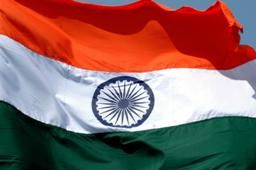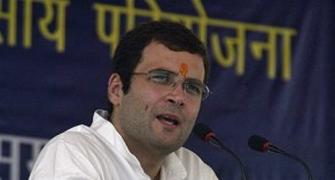The high inflation that has been raging for a couple of years has now caused people to lose faith in keeping money in banks and stocks and, instead, opt for gold, rues Subir Roy.
 As concern about the unfolding economic crisis has risen in India, many experts have assured us that 2013 is not 1991.
As concern about the unfolding economic crisis has risen in India, many experts have assured us that 2013 is not 1991.
It is important to think so; if you feel otherwise, the negative sentiment will create its own reality.
How serious the situation actually is can be gauged by the ease -- or otherwise -- with which correctives can be devised. And it is here that a disturbing scenario emerges.
One major cause of the current malady on which most are agreed is inflation.
The high inflation that has been raging for a couple of years has now caused people to lose faith in keeping money in banks and stocks and, instead, opt for gold.
This has led to a sharp rise in gold imports, a key contributor to the current account deficit.
Therefore, the appropriate course correction is to bring down the rate of inflation.
Another reason behind the high current account deficit, which has created adverse sentiment over the rupee and led to its sharp decline vis-à-vis the US dollar, is the high energy import bill.
It is widely agreed that the nation has not done enough to become more energy efficient.
Besides, populist profligacy, which has contributed to the fiscal deficit, has taken the form of subsidising energy consumption.
So the way to make the economy’s fundamentals robust again is to reduce energy subsidy.
But herein lies the catch.
The first consequence of doing so will be an increase in the level of inflation, which will put paid to the idea of controlling it in the short run.
And till such time as not just inflation but the memory of it remains, investors will be tempted to park their savings in gold.
Bringing down inflation involves another dilemma.
The Reserve Bank of India has applied the conventional monetary tool to curb inflation -- firming up interest rates -- and has come to grief.
Inflation has remained stubbornly high; it appeared to start coming down only recently. What has simultaneously happened is a fall in the growth rate -- which is natural when you tighten money -- which has, in turn, created fears
Most recently, the countermeasures the RBI has taken to stem the rupee’s fall have created a situation in which the central bank has had to pump in a bit of liquidity.
So is it having to give back with one hand what it has sought to take away with another?
If this is the national picture, the global one looks no better.
The immediate cause of the current crisis affecting emerging economies -- the United States Federal Reserve has signalled that it will begin tightening policy now that the US economy is on the mend -- has led to an outflow of funds to the US in anticipation of higher interest rates.
But should the Fed now try to undo the damage and signal continued monetary expansion, things may not get any better for emerging economies.
Continued easy liquidity in the US will make that country’s growth momentum more robust.
If this happens then the chances are that, in the immediate future, a brighter outlook in the US and other developed economies will continue to attract investment flows.
So, for some time at least, investment flows will not return to emerging markets. Investors sought out emerging economies in the first place because prospects there were better.
Today the boot is on the other foot and is likely to remain there for some time.
Perhaps the greatest dilemma facing the entire global system -- and not just India and other countries currently in dire straits -- pertains to taking a call on the policy of unrestricted capital flows that most of the world has been wedded to for two decades.
The world of capital controls and managed exchange rates has been left behind, supposedly for good.
But two Asian crises -- the one in the late 1990s and the present one -- have underlined the phenomenon of currencies and real economies being at times out of sync, thereby causing great and avoidable hardship.
India is considered to have remained mostly unaffected by the tumult of the late 1990s and the late 2000s.
This was made possible because the country retained a degree of capital controls to act as a counterpoise to volatile short-term capital flows; it also had the readiness to put on the brakes in times of turmoil.
Today’s turmoil can renew the debate on capital controls that was supposedly settled. So the current crisis may be a minor one, but there are dilemmas galore in finding a way out of it.










